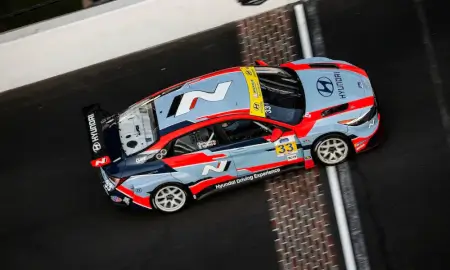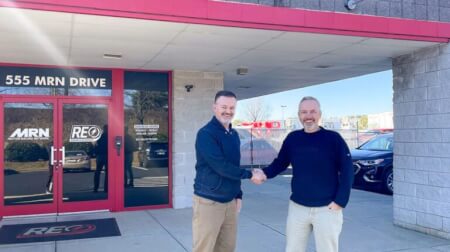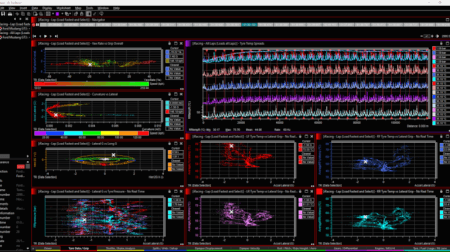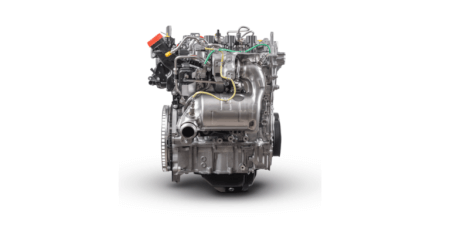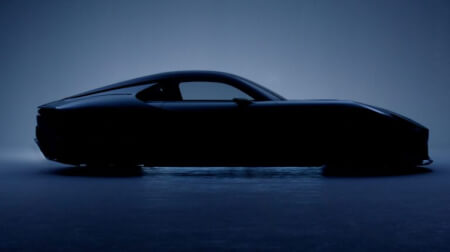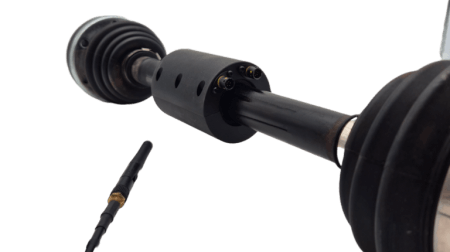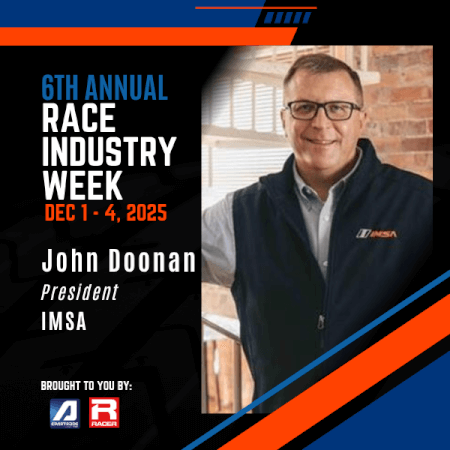September 26th 2024
Bosch, Wickens collaborate on new electronic hand-held brake system
A year on from a second-place finish in the TCR class of IMSA Michelin Pilot Challenge for Robbie Wickens and Harry Gottsacker, they achieved the feat again with a key difference: Instead of Wickens needing to use all the force both hands could provide to apply the brake, he could do it with one hand thanks to a new system from Bosch that borrows from the company’s LMDh technology.
Wickens, with a couple of different co-drivers, has won races and a championship in IMPC TCR since coming back from his paralysis sustained in an IndyCar crash. Bryan Herta Autosport and Hyundai worked to give him an Elantra N TCR with hand controls that he could race competitively. The same technology has been used to allow other paraplegic drivers to race, but it had some drawbacks. The brake control is a ring behind the steering wheel. Formerly, it activated the brake through a hydraulic actuator, and it required a significant amount of force to get the same brake pressure an able-bodied driver could get with their feet.
The new system, a collaboration between Bosch and Wickens, uses Bosch’s existing electronic brake system module as used in the LMDh cars.
“From a competitive aspect, I think it’s a big step forward in my journey,” said Wickens. “It’s definitely taken some getting used to primarily because I’ve adapted my braking techniques in this TCR car. I’ve only driven the TCR car with that braking system, so having to kind of re-learn how I apply the brake has been a bit of a challenge, and in relatively short time; but, honestly, it feels great. So far, it’s doing everything I want it to do, and with no latencies, no surprises, like I’ve had in the past.”
For the engineers at Bosch, it was an exciting project to develop. And while the system uses existing technology, adapting it to a new purpose wasn’t necessarily easy.
“We approached it the same way we would even on a road car, going through all those diagnostic checks, doing the safety, and approaching it from a complete system,” explained Jordan Krell, senior application engineer at Bosch. “We were able to take a lot of our technology from the road car perspective, but then also in all of our pieces from motorsport. There are a lot of components in this that are from the LMDh system, and so they’re already race proven, but now we’re putting them in a new application. So it was a little tricky to make all of that work, and for us, it took a lot of teamwork. We have a really dedicated team at Bosch motorsport. It was the most exciting project that everyone wanted to work on.”
The system not only requires less force from Wickens, it removes some competitive disadvantages that he and his co-drivers faced. Able-bodied drivers have no problem braking and downshifting at the same time. Other drivers don’t have to work around an actuator in the middle of the pedal box during driver changes. It’s a big improvement over the previous system, although it’s not yet perfect.
“With the previous system, I was braking with both my hands because, frankly, I had to to achieve peak brake pressure,” Wickens said. “Where now with the electronic system, I can just use one hand. Now I have my left hand free to downshift whenever I want. Relearning just using one hand instead of both has been unique. But then there’s little things like trying to increase a bit of travel in the brake system and maybe change a bit of resistance, just to give me a little bit more feel in my medium- to low-brake applications as well as my trail braking.”
Wickens says he hopes that the system will provide more opportunities for himself – the technology is much easier to transfer from car to car – and help him get back to the next level of motorsport, such as competing int eh WeatherTech SportsCar Championship. But he also hopes that it helps create opportunities for others.
“I think the big thing is, and the goal from all this is, we’re trying to create equal opportunity for unabled-body drivers, even if I include myself,” he said. “I think with what I’ve done in my career, hopefully I can hold my head up high and created an easier path for the next generation of disabled motorsport athletes trying to find their way to the highest levels of motorsport.”
For more information: www.racer.com
For more Industry News, please Click Here
For more information: www.racer.com
For more Industry News, please Click Here
